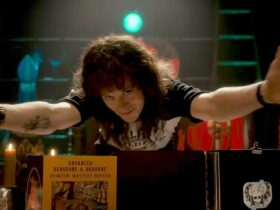Japanese tales and fairy tales represent the key to Japanese folklore, fundamental for understanding the popular culture of the land of the Rising Sun
To characterize Japanese tales and fairy tales are: theantiquity of stories, the literary style e cultural originality. On the other hand, like any other Western history, even those of the East have ancient origins. What differentiates Japanese tales and fairy tales is the culture capable of transcending time.
The story | Japanese tales and fairy tales: 3 stories of Japanese folklore
Japanese tales and fairy tales, as in many other countries, refer to popular tradition and the consequent oral transmission but many stories have origins outside Japan.
In fact, through China, Tibet, the Indies or Korea, stories then adapted to Japanese culture arrived in Japan, naturalizing in all respects the foreign story. The purely Japanese stories, on the other hand, are of origin Shintoista or dating back to the Japanese Middle Ages.
The tales of Japanese folklore are divided into many categories. We will list some of them: mukashibanashi, namidabanashi, obakebanashi, otogibanashi and many others. Wanting to speak in particular of the Japanese fairy tale we will focus on mukashibanashi and otogibanashi.
Mukashibanashi and Otogibanashi | Japanese tales and fairy tales: 3 stories of Japanese folklore
The mukashibanashi O “very old stories”Is the oldest and most popular form of the fairy tale. The word literally means “tale of ancient times” and indicates the now known characteristics of the classic fairy tale: magical elements, indefinite place or time etc …
As for our fairy tales, they begin with a recurring phrase or “Mukashi Mukashi aru tokoro ni” which can be translated with our own “Once upon a time”. The characters of a mukashibanashi are almost always the same, that is an old man or an old woman, a man with a name often similar, such as Taro or Jiro, elves, deities, magical creatures.
These tales, which, as we have said, were initially handed down orally, began to be transcribed by members of the aristocracy starting from the ninth century and still contain, even today, the folkloric heritage of the land of the Rising Sun, useful for identifying some typical subjects of Japanese iconography.
L’ otogibanashi O “stories for pleasure”Comes from short folk tales called otogizoshi, a literary trend that developed in the late Middle Ages. The otogibanashi represents the fable section of this genre and literally means “company story”. Compared to the mukashibanashi it has a less indigenous location and winks at Western fairy tales. They are, therefore, far less traditional stories. Despite this, otogibanashi adapted perfectly to fairy tales and mukashibanashi, so much so that it became one of the favorite genres for children’s literature.
Regardless of the type of fairy tale, however, it is important to point out how the child extraordinary is the fundamental subject of many stories. This child, strong or capable of great deeds, is an important key to understanding the Japanese mentality. The idea is so deeply rooted in Japanese culture that the boy who saves the world, or with immense powers, is found in all the souls of the tradition.
3 stories
Urashima Taro.
Perhaps one of the best known mukashibanashi: a fisherman steals a turtle from a group of children and as a reward he is taken to the kingdom of water by the queen where Taro knows happiness. Back in his world, the queen gives him a casket, saying she never has to open it, but, on the surface, Taro discovers that everything has become different. His country is no longer a country but a city and the air has become unbreathable between cars and factories. Desolate, Taro opens the casket and surrounded by a white cloud, he grows old.
Issun boshi.
This is an otogibanashi and is considered the Japanese version of the classic Tom Thumb.
Momo Taro.
Here, too, Taro is recurring, literally it means “fishing boy”. The protagonist, in fact, was born from a peach. It is a very read mukashibanashi and has as its protagonist an extraordinary child, remembering what was said previously. Taro, having moved away from his family, in fact goes to face the oni (orcs), managing to knock down his head and stealing a booty with which his family and friends will live happily ever after.















Leave a Reply
View Comments